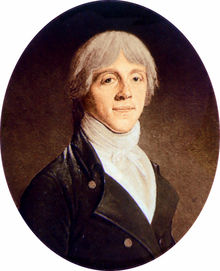
Jules Paul Benjamin Delessert
Encyclopedia

France
The French Republic , The French Republic , The French Republic , (commonly known as France , is a unitary semi-presidential republic in Western Europe with several overseas territories and islands located on other continents and in the Indian, Pacific, and Atlantic oceans. Metropolitan France...
banker and naturalist
Natural history
Natural history is the scientific research of plants or animals, leaning more towards observational rather than experimental methods of study, and encompasses more research published in magazines than in academic journals. Grouped among the natural sciences, natural history is the systematic study...
.
He was born at Lyon
Lyon
Lyon , is a city in east-central France in the Rhône-Alpes region, situated between Paris and Marseille. Lyon is located at from Paris, from Marseille, from Geneva, from Turin, and from Barcelona. The residents of the city are called Lyonnais....
, the son of Étienne Delessert (1735–1816), the founder of the first fire insurance company and the first discount bank in France. Young Delessert was travelling in England when the French Revolution
French Revolution
The French Revolution , sometimes distinguished as the 'Great French Revolution' , was a period of radical social and political upheaval in France and Europe. The absolute monarchy that had ruled France for centuries collapsed in three years...
broke out, but he hastened back to join the Paris National Guard in 1790, becoming an officer of artillery in 1793. His father bought him out of the army, however, in 1795 in order to entrust him with the management of his bank.
Gifted with remarkable energy, he started many commercial enterprises, founding the first cotton
Cotton
Cotton is a soft, fluffy staple fiber that grows in a boll, or protective capsule, around the seeds of cotton plants of the genus Gossypium. The fiber is almost pure cellulose. The botanical purpose of cotton fiber is to aid in seed dispersal....
factory at Passy
Passy
Passy is an area of Paris, France, located in the XVIe arrondissement, on the Right Bank. It is traditionally home to many of the city's wealthiest residents.Passy was formerly a commune...
in 1801, and a sugar
Sugar
Sugar is a class of edible crystalline carbohydrates, mainly sucrose, lactose, and fructose, characterized by a sweet flavor.Sucrose in its refined form primarily comes from sugar cane and sugar beet...
factory in 1802, for which he was created a baron of the empire. He sat in the chamber of deputies
Chamber of Deputies of France
Chamber of Deputies was the name given to several parliamentary bodies in France in the nineteenth and twentieth centuries:* 1814–1848 during the Bourbon Restoration and the July Monarchy, the Chamber of Deputies was the Lower chamber of the French Parliament, elected by census suffrage.*...
for many years, and was a strong advocate for many humane measures, notably the suppression of the Tours or revolving box at the foundling hospital, the suppression of the death penalty, and the improvement of the penitentiary system. He was made regent of the Bank of France in 1802, and was also member of, and, indeed, founder of many, learned and philanthropic societies. In 1818 He founded with Jean-Conrad Hottinger the first savings bank
Savings bank
A savings bank is a financial institution whose primary purpose is accepting savings deposits. It may also perform some other functions.In Europe, savings banks originated in the 19th or sometimes even the 18th century. Their original objective was to provide easily accessible savings products to...
in France, the Groupe Caisse d'Epargne
Groupe Caisse d'Epargne
Groupe Caisse d'Epargne is a French semi-cooperative banking group, founded in 1818, with around 4700 branches in the country. The group is active in retail and private banking, as well as holding a significant stake in the publicly traded investment bank Natixis.-Operations:The group's most...
and maintained a keen interest in it until his death in 1847.
He was also an ardent botanist and conchologist; his botanical library embraced 30,000 volumes, of which he published a catalogue Musée botanique de M. Delessert (1845). He also wrote Des avantages de la caisse d'épargne et de prévoyance (1835), Mémoire sur un projet de bibliothèque royale (1836), Le Guide de bonheur (1839), and Recueil de coquilles décrites par Lamarck (1841–1842).

